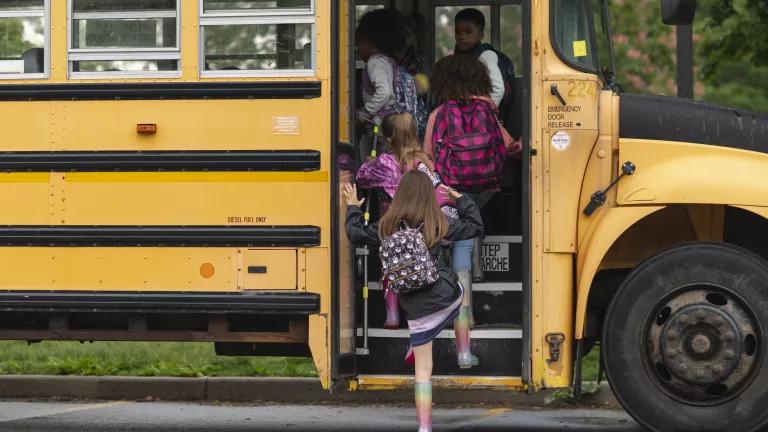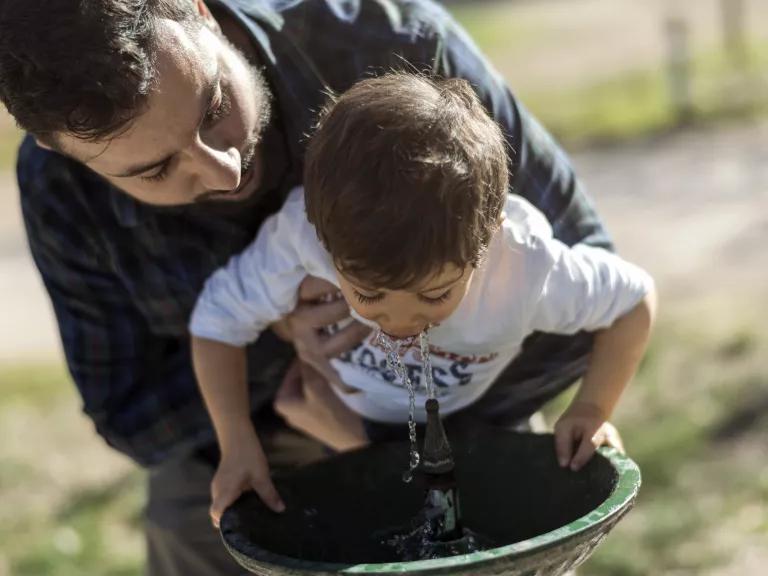Lead and Copper Rule School Report Card: No Sign of Improvement
EPA's proposed Lead and Copper Rule retains much of the Trump administration's rule.

The U.S. Environmental Protection Agency (EPA) recently released the long-awaited proposed Lead and Copper Rule Improvements (LCRI), and the report card does not look good for schools and childcare centers. There are elements of the proposed rule that are great news for public health, like the removal of most lead service lines within 10 years, but the portions of the rule specifically addressing schools and childcare facilities show no signs of improvement.
Lead can affect almost every organ and system in the human body; even at very low levels lead can cause serious, irreversible damage to the developing brains and nervous systems of babies and young children. EPA recently estimated that formula-fed babies get up to 40 to 60 percent of their lead exposure from drinking water. Lead can decrease a child’s cognitive capacity, cause behavioral problems, and limit their ability to concentrate—all of which affect their learning potential in school.

The good news is that some smaller childcare facilities and home childcare centers will likely benefit from the LCRI because they may be served by a lead service line. The proposed rule would do more to protect children in those places, as utilities comply with the mandate to replace lead service lines. But larger childcare facilities and schools won’t benefit from lead service line replacements because they’re less likely to have a lead service line to begin with. That’s one reason why it’s vital to have strong protections for all childcare facilities and schools.
|
REPORT CARD |
||||
|---|---|---|---|---|
| GRADING PERIOD | 1 | 2 | 3 | 4 |
| Childcare facilities | U, N | |||
| Elementary schools | U, N | |||
| High schools | U, N | |||
| A=Excellent / B=Good / C=Satisfactory / N=Needs Improvement / U=Unsatisfactory | ||||
| Student: EPA LCRI | Year: 2023 | |||
The proposed rule retains many of the weak elements previously proposed by the Trump Administration. Those paltry elements include:
- Allowing elementary schools and childcare facilities (CCF) to decline testing, with no consequences
- Only attempting to test 20 percent of schools and childcare facilities each year
- Not requiring the onetime tests of schools and childcares to be repeated
- Only testing in a high school if the school requests testing
- No requirement to remediate if lead is found in the water
- Including various waivers or exemptions based on facility construction date and state-mandated testing
- If a school or childcare facility does not opt out, only five and two outlets, respectively, must be tested even if a school has dozens of drinking fountains and kitchen faucets
- No requirement to tell parents, students, or teachers about lead test results, even in the event lead is found in a school or childcare facility
In the LCRI rule proposal, the EPA states that “larger buildings, such as schools and child care facilities, can have a higher potential for elevated lead levels due to complex plumbing arrangements, the presence of lead in premise plumbing, and inconsistent water use patterns that can result in long stagnation times.” If this is recognized by the agency, why isn't it doing more to protect kids in the places they spend as much or even more time in than their homes?
Some places are stepping up to fill the gap that the EPA has left for decades and seems content to leave in place. Michigan recently enacted Filter First legislation, which requires schools and childcare centers to provide filtered water for kids. The only testing that is required is post-filtration to ensure the filters are working properly and providing water with less than 1 part per billion (ppb) of lead. Washington, D.C., has had a similar Filter First program in place for several years. Filter First is the most health-protective program for our children.
Other states don’t have Filter First requirements but do have more robust school testing and remediation requirements. New York requires testing of every drinking water outlet in schools every three years, does not provide a waiver for schools constructed after a certain date, and has an action level of 5 ppb. (EPA’s LCRI proposes to reduce the action level from its current level of 15 pbb down to 10 ppb, but there generally would be no mandatory consequence for a school or childcare facility exceeding the action level.) Colorado has a onetime testing requirement for schools, childcare centers, and childcare homes and requires remediation if a test result is above 5 ppb. Many elements of these state laws are stronger than the EPA’s proposal. On the other end of the spectrum, California’s governor recently vetoed a bill that required lead testing in schools. This highlights the need for strong federal requirements; if left up to states, there will be a patchwork of requirements leaving large gaps for children's health to fall through.
While there are many aspects of the proposed LCRI that are a big step forward, the provisions for schools and childcare facilities have shown no improvement and are woefully insufficient. The EPA is accepting comments on the rule and so there is an opportunity to strengthen these elements. The EPA should improve the rule by requiring:
- The 10 percent of schools that are regulated as a water system to remove any lead service line and install point of use filters and
- For any other school or CCF, the water system must conduct testing, twice a year, of each outlet used for consumption; unless the school or CCF has point of use filters on all outlets used for consumption and tests to ensure the filters are functioning properly.
The EPA must do everything possible to protect our children from lead in drinking water. We don’t know when the EPA will revisit the Lead and Copper Rule, and our children don’t have years or decades to wait for safer drinking water.




